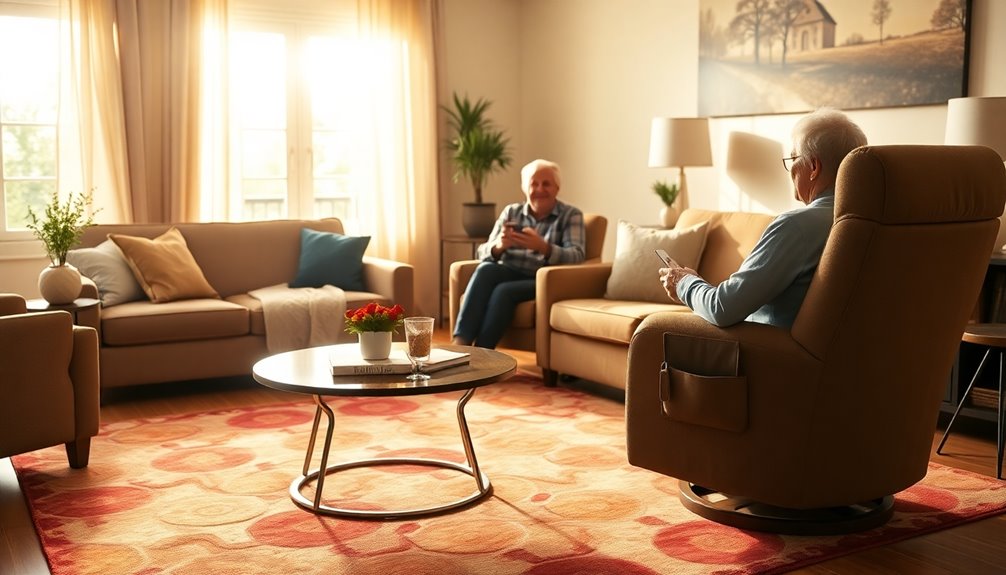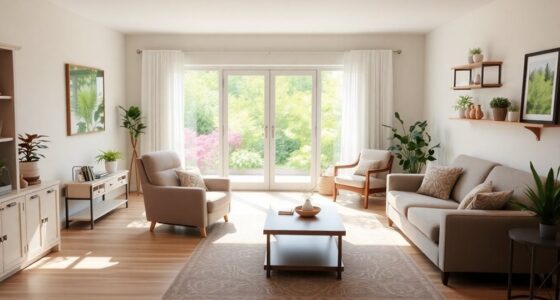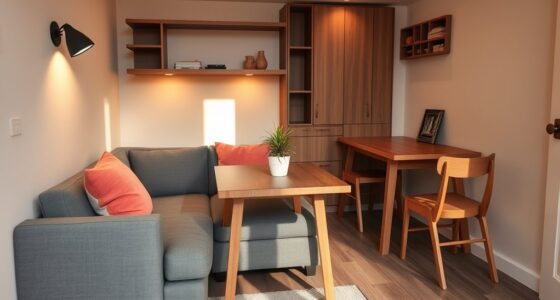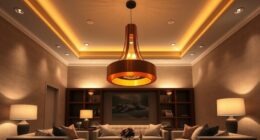You won't believe how these 10 furniture hacks can transform elderly living! Simple changes like raised beds and chairs can make sitting and standing easier. Adding grab rails and rounded edges can greatly enhance safety. Creative storage solutions keep spaces clutter-free, while ergonomic designs boost comfort and mood. With stylish multi-functional pieces, you can elevate independence. You'll be amazed at the difference these ideas can make. Discover how these hacks can revitalize your loved one's home!
Key Takeaways
- Smart furniture hacks improve navigation and safety for the elderly, reducing fall risks and enhancing independence.
- Ergonomic designs and raised furniture promote better posture, ease of use, and overall comfort for seniors.
- Creative storage solutions help keep spaces organized, minimizing clutter and creating clear pathways for safer movement.
- Safety features like rounded edges and stable bases prevent injuries and ensure a secure environment for elderly individuals.
- Budget-friendly furniture hacks provide accessible ways to revitalize living spaces, enhancing both functionality and aesthetics without breaking the bank.
Transforming Furniture for Better Accessibility
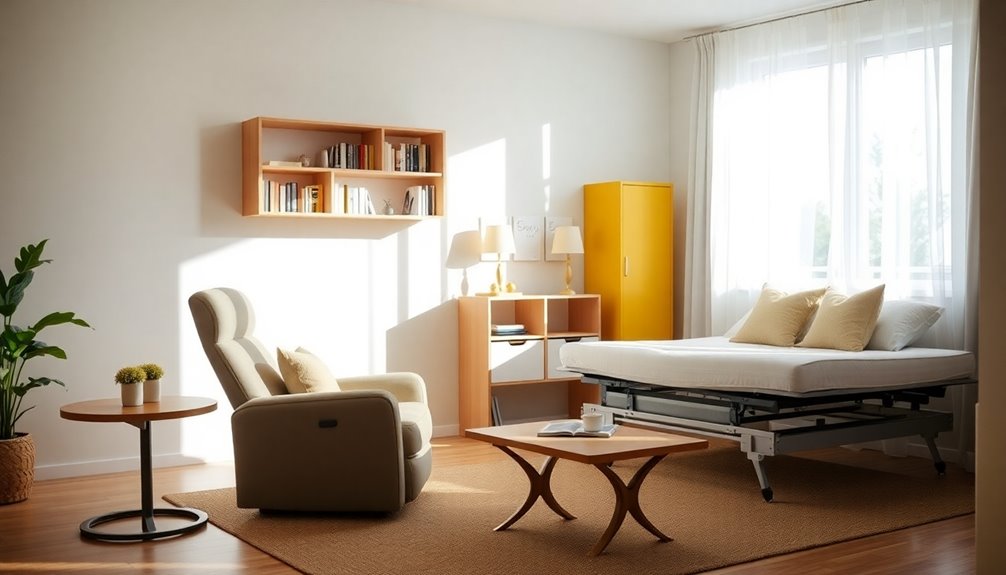
When you transform furniture for better accessibility, you’re not just making improvements; you’re creating a safer and more comfortable living environment for elderly individuals. Implementing clever accessibility hacks for elderly individuals can significantly enhance their daily experience, allowing them to maintain independence while navigating their home. Simple adjustments, such as installing grab bars in bathrooms or using furniture with easy-to-reach heights, can prevent accidents and provide a sense of security. Ultimately, these thoughtful modifications not only promote safety but also encourage a greater quality of life for seniors, ensuring they feel valued and supported in their living spaces.
Implementing smart furniture hacks, like choosing brightly colored and easily identifiable pieces, can greatly enhance navigation and safety, especially for those living with dementia. Raised furniture with added support makes sitting and standing less strenuous, while lower shelving and pull-out drawers provide easy access to items, reducing fall risks.
Incorporating rounded edges and stable bases into your designs minimizes accidents, further ensuring safety. By focusing on ergonomic elements, you elevate comfort and usability, ultimately improving the quality of life for seniors. Additionally, utilizing natural materials can enhance the overall aesthetic while ensuring durability and comfort.
These thoughtful modifications can make a world of difference in their daily lives.
Creative Storage Solutions for a Clutter-Free Space
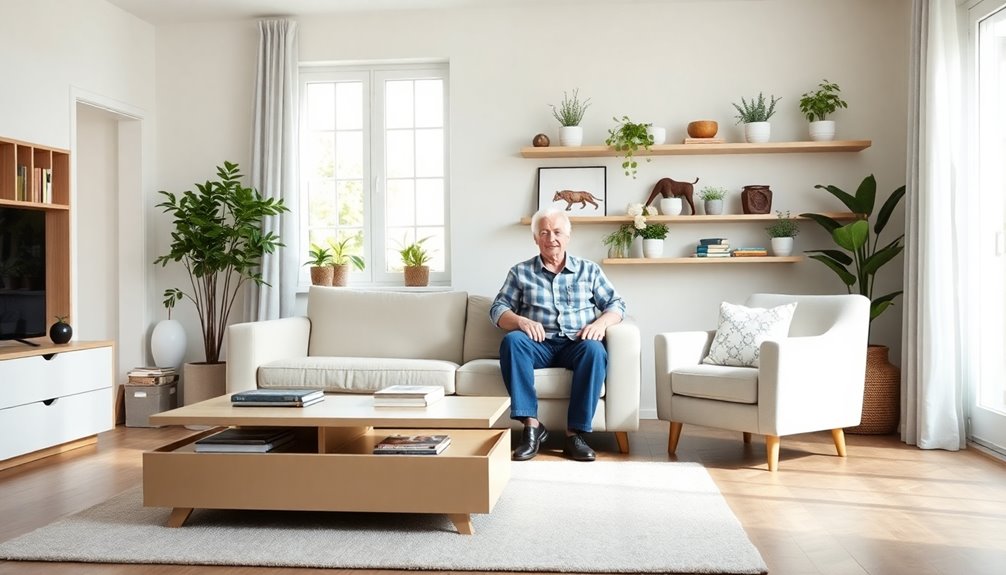
Creating a clutter-free space is essential for elderly living, and innovative storage solutions can make all the difference. You can transform your home with these creative ideas that guarantee both functionality and style:
| Storage Solution | Benefits | Aesthetic Appeal |
|---|---|---|
| Hidden litter box bench | Maximizes space, keeps tidy | Blends seamlessly with decor |
| Custom entertainment center | Organized media storage | Enhances the overall look and feel |
| Mario-inspired shelf | Fun and accessible for small items | Adds a whimsical touch to the room |
Make sure to utilize elevated dressers for easy access and consider adding casters for mobility. Additionally, ensuring a safe sleep environment can contribute to overall comfort and independence. With these creative storage solutions, you'll enjoy a clutter-free environment that promotes comfort and independence.
Enhancing Comfort With Ergonomic Designs
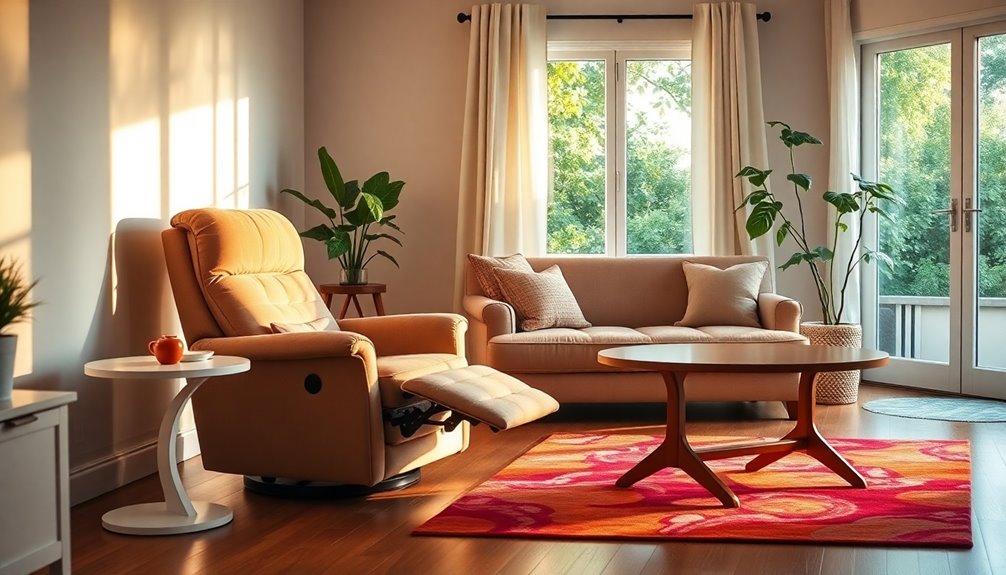
Enhancing comfort in your living space is essential, especially as we age and face challenges like joint pain or mobility issues.
Try using ergonomic furniture designs that greatly reduce strain on your body. For example, adjustable chairs and tables promote better posture, helping you maintain a healthy spine while eating or reading.
Raised-height beds and chairs minimize the effort needed to sit and stand, enhancing your independence.
Lightweight options, like those made from aluminum or plastic, allow you to rearrange your space easily without risking injury.
Plus, supportive backrests and armrests improve relaxation, contributing to better sleep quality.
Incorporating ergonomic designs can significantly improve overall comfort and reduce the risk of strain-related injuries.
See what's available to transform your living environment into a more comfortable haven.
Stylish Furniture Alternatives for Independent Living
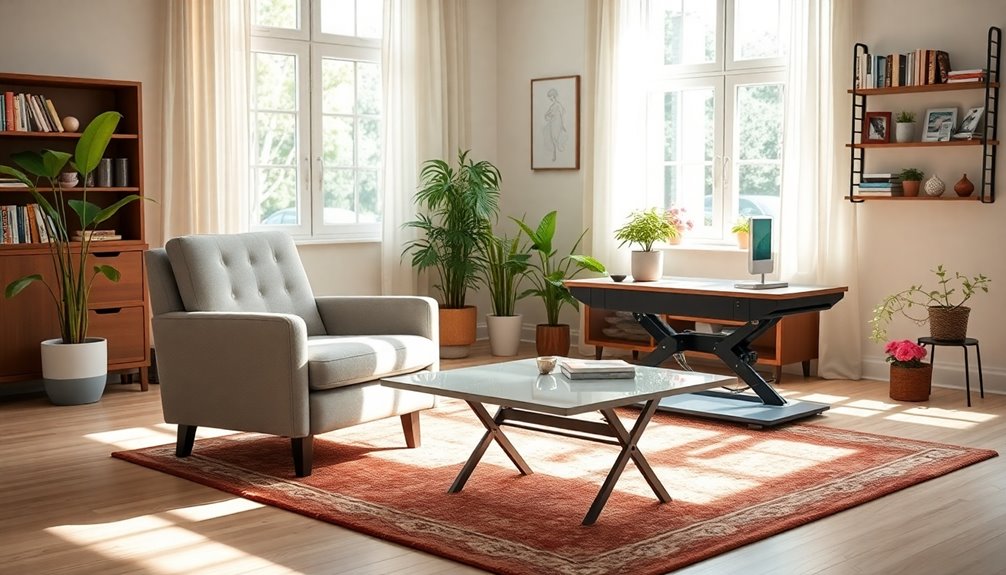
Finding the right furniture can make a big difference in your daily life.
Ergonomic chairs and adjustable tables not only provide comfort but also adapt to your specific needs, promoting better posture and ease of use.
Additionally, proper venting systems in your living space can greatly enhance safety and comfort, making it easier to enjoy your home environment.
Let's explore some stylish alternatives that enhance your independence while keeping your space functional and inviting.
Ergonomic Chair Options
Although comfort and style may seem at odds, ergonomic chairs offer a perfect blend of both for elderly living. These chairs are designed to support your back and improve posture, which is essential for maintaining mobility. With adjustable height, lumbar support, and armrests, you can customize your seating for maximum comfort. Research shows that investing in ergonomic furniture can enhance your productivity and reduce discomfort. Additionally, proper maintenance of furniture can contribute to longevity and sustained comfort over time.
| Chair Type | Features | Approx. Cost |
|---|---|---|
| Classic Ergonomic | Adjustable lumbar support | $150 |
| Modern Design | Sleek style, breathable fabric | $200 |
| Reclining Chair | Extended back support | $250 |
| Compact Chair | Space-saving design | $120 |
| Luxury Option | Premium materials | $400 |
Incorporating these chairs can truly enhance your independence!
Adjustable Table Solutions
You Won't Believe the Impact of These 10 Furniture Hacks on Elderly Living!
Adjustable Table Solutions (Stylish Furniture Alternatives for Independent Living)
While ergonomic chairs provide excellent support for comfort, adjustable tables take independence to the next level in elderly living.
These versatile tables can be customized to different heights, allowing you to find the perfect position for eating, reading, or enjoying hobbies. Many models feature easy-to-use mechanisms like pneumatic lifts or cranks, so you can adjust the height without assistance.
Their sturdy construction guarantees stability, minimizing the risk of spills or accidents during activities. Plus, some tables come with built-in storage or trays, helping reduce clutter in your living space. Additionally, integrating play with educational content can enhance cognitive engagement during mealtime or leisure activities.
With stylish designs that fit seamlessly into your home decor, adjustable tables aren't just practical; they enhance your environment, making it welcoming and visually appealing.
Incorporating Multi-Functional Pieces
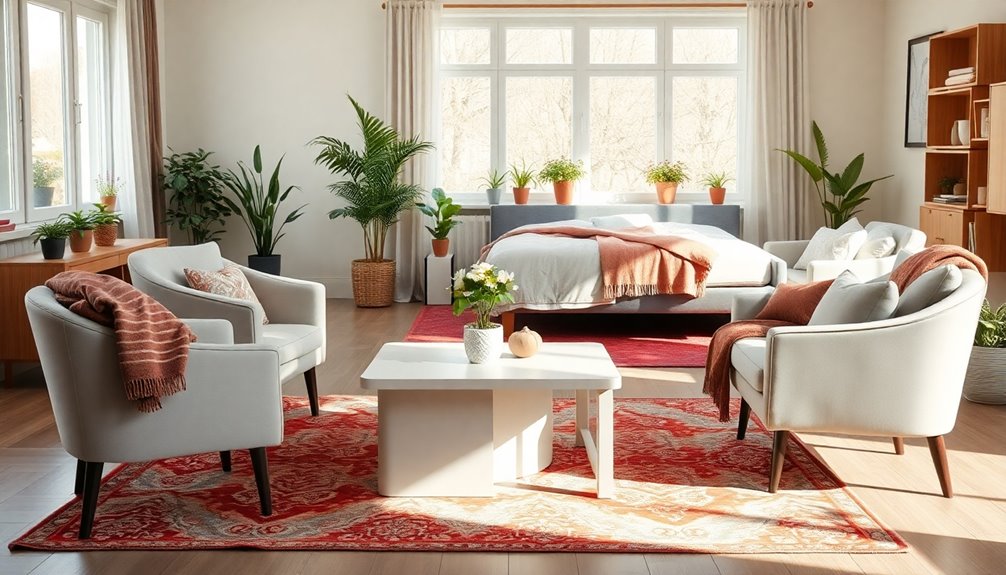
Incorporating multi-functional pieces into your living space not only maximizes comfort but also enhances accessibility for elderly individuals. Consider items like storage ottomans or sofa beds that save space while providing comfort. Built-in storage solutions help reduce clutter, allowing for safer navigation. Lift-top coffee tables offer easy access to items without the need for bending, promoting independence. Additionally, implementing effective preventive maintenance on these furniture pieces can ensure they remain in optimal condition for safe use.
Here's a quick reference table to help you choose:
| Furniture Type | Functionality | Benefits |
|---|---|---|
| Sofa Bed | Seating and sleeping | Space-saving, versatile |
| Storage Ottoman | Seating and storage | Reduces clutter |
| Lift-Top Coffee Table | Coffee table and storage access | Easy access, promotes independence |
| Adjustable Chair | Comfort for different users | Accommodates mobility needs |
| Convertible Dining Table | Dining and workspace | Flexibility for activities |
Easy Upgrades for Safety and Stability

To enhance safety and stability in your home, consider installing grab rails in key areas like bathrooms and stairways. Choosing furniture with rounded edges and sturdy designs can make a big difference in preventing injuries. Additionally, establishing good oral hygiene habits early on can contribute to overall well-being, which is crucial for elderly individuals.
Enhance Furniture Stability
Ensuring furniture stability is essential for creating a safe living environment for the elderly. Start by placing non-slip pads or rubber grips under furniture legs to prevent sliding on slippery floors.
If you notice any wobbly tables or chairs, reinforce them with brackets or braces for added sturdiness. Consider upgrading standard screws to longer, thicker ones during assembly to enhance durability and reduce collapse risks.
For unstable bookshelves or cabinets, anchor them to the wall using safety straps to prevent tipping.
Finally, choose furniture with a lower center of gravity, like wider bases or lower height designs, to improve stability and make it easier for elderly individuals to use safely. These simple upgrades can greatly impact everyday safety. Additionally, maintaining a clean environment can further enhance safety by reducing allergens and pollutants, contributing to a healthier space for elderly individuals.
Improve Safety Features
While enhancing furniture stability is important, improving safety features throughout the home can make a significant difference in the lives of elderly individuals.
Installing grab rails in bathrooms and stairways is a smart move, as they provide essential support and reduce fall risks. Non-slip mats and rugs can also prevent slips on smooth floors, ensuring safer movement.
Elevating furniture to a comfortable height, like beds and chairs, makes sitting and standing easier, promoting stability. Additionally, keep pathways clear of clutter to help seniors navigate their spaces safely.
Finally, brighter lighting in hallways and staircases enhances visibility, reducing the likelihood of accidents. These simple upgrades can create a safer living environment for your loved ones. Moreover, regular updates to plans can help accommodate changing needs and ensure continued safety.
Using Color and Design to Boost Mood

Bright colors and thoughtful design can truly transform a living space for seniors, making it not just functional but uplifting. Incorporating bright, contrasting colors in furniture enhances visibility, reducing confusion and improving navigation.
Warm shades like yellows and oranges boost mood and energy, creating an inviting atmosphere. For relaxation and calmness, soft, muted tones work wonders, especially in bedrooms, alleviating anxiety and stress.
Choose furniture with clear, simple designs and minimal patterns to aid cognitive clarity, helping those with cognitive impairments engage better with their surroundings.
Furniture Arrangements for Improved Mobility

To improve mobility in your living space, focus on creating clear pathways that are at least 36 inches wide.
Position frequently used items within easy reach and consider lightweight furniture that can adapt to your needs.
Ergonomic seating options can also enhance comfort and support, making movement throughout your home easier and safer.
Clear Pathways for Movement
Creating clear pathways for movement is essential in ensuring the safety and mobility of elderly individuals in their living spaces. Aim for pathways at least 36 inches wide, allowing for easy navigation and reducing fall risks.
Remove or reposition low furniture like coffee tables and ottomans that obstruct walking paths to prevent tripping hazards. Opt for furniture with rounded edges instead of sharp corners to enhance safety and minimize injury risks.
Consider multifunctional pieces, such as storage ottomans, to reduce clutter and open up more space for movement. Regularly assess and adjust furniture layouts based on the mobility needs of elderly residents, ensuring ideal accessibility throughout their living environment.
Safe pathways can greatly improve their overall quality of life.
Accessible Furniture Placement
Clear pathways are just the beginning of guaranteeing a safe living environment for elderly individuals.
You should arrange furniture to create clear pathways, leaving at least 36 inches of space for easy navigation. Position frequently used items within arm's reach to minimize bending or stretching, which can lead to falls.
Opt for furniture with rounded edges to prevent injuries from accidental bumps, enhancing overall safety. Make certain that seating is at an appropriate height, ideally 17-19 inches from the floor, making it easier for older adults to stand and sit.
Finally, incorporate non-slip mats or rugs in high-traffic areas to provide stability and prevent slipping while moving around the home.
These thoughtful adjustments can greatly improve mobility and safety.
Ergonomic Seating Options
When you choose ergonomic seating options, you're investing in comfort and safety for elderly individuals. Chairs with lumbar support and adjustable heights reduce strain on the back and legs, enhancing mobility. Adding armrests allows for easier adjustments from sitting to standing, promoting independence. Slightly elevated chairs help those with mobility issues, minimizing effort while sitting or standing.
Here's a quick comparison of ergonomic seating options:
| Type of Chair | Benefits | Key Features |
|---|---|---|
| Lumbar Support Chair | Reduces back strain | Adjustable height |
| Armrest Chair | Aids in standing | Sturdy armrests |
| Elevated Chair | Eases sitting and standing | Slightly higher seat height |
| Lightweight Chair | Flexible arrangements | Easy to move |
Choose wisely for better joint health and safety!
Adapting Existing Furniture for Senior Needs

Adapting existing furniture to meet seniors' needs can greatly improve their safety and comfort at home.
Start by using brightly colored furniture to enhance visibility and reduce confusion in their spaces. Rearranging furniture layouts to eliminate clutter creates clear pathways, helping to prevent falls.
Consider adding easy-to-grip handles and lever-style knobs on cabinets to make daily tasks easier. Opt for armchairs with raised seats, allowing seniors to sit down and stand up with less effort, promoting independence.
Finally, adding non-slip pads to furniture legs enhances stability and prevents unwanted movement, ensuring a safer environment.
These simple modifications can transform a home into a more accessible and comfortable space for elderly individuals.
Budget-Friendly Hacks to Revitalize Spaces
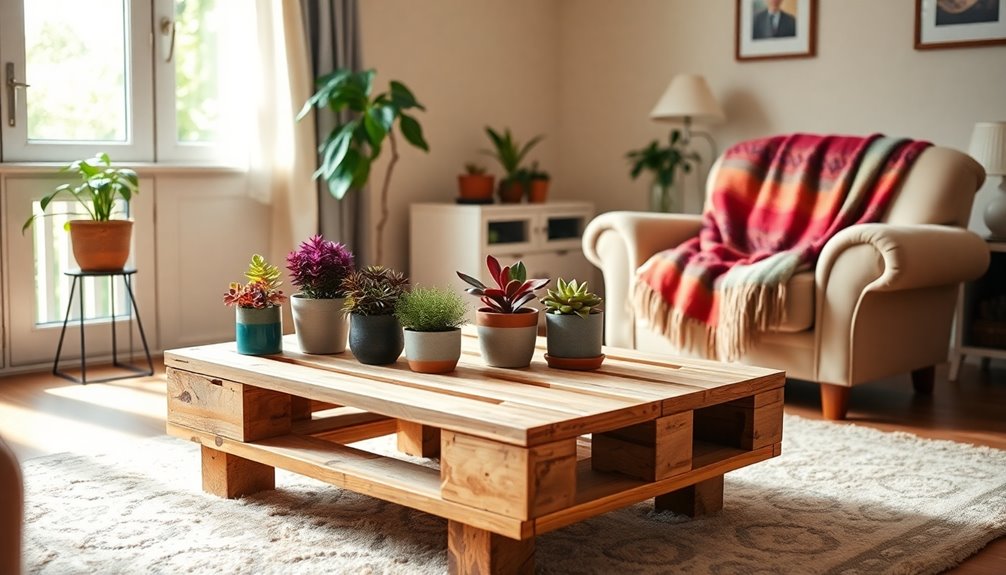
Revitalizing your space doesn't have to break the bank; with a little creativity, you can achieve stunning results on a budget. Here are some fantastic hacks you can try:
| Hack | Cost | Benefits |
|---|---|---|
| Kallax shelf project | $25 | Enhances storage with recycled materials |
| Faux marble table | $180 | Transforms a basic table into a centerpiece |
| DIY towel rack | $14 | Saves over 70% compared to store-bought |
| Malm changing table hack | $50 | Provides a functional, easy-to-maintain solution |
| Custom entertainment center | Variable | Personalized touch with smart investment |
These budget-friendly ideas can breathe new life into your home, proving that style and function don't have to come with a hefty price tag. Get started today!
Frequently Asked Questions
What Are Some Budget-Friendly Materials for DIY Furniture Hacks?
When you're looking for budget-friendly materials for DIY furniture hacks, consider using reclaimed wood, pallets, or even old furniture pieces.
Thrift stores often have affordable options that you can repurpose. For upholstery, try using fabric remnants or even bedsheets for a fresh look.
Don't forget about paint; it's a cost-effective way to rejuvenate older pieces.
How Can I Assess My Elderly Loved One's Specific Needs?
Did you know that nearly 90% of seniors prefer to age in place?
To assess your elderly loved one's specific needs, start by observing their daily routines. Ask questions about their mobility, comfort, and safety in their living space.
It's also helpful to involve them in the conversation; their insights are invaluable.
Consider consulting professionals for a thorough assessment, ensuring you address any physical or emotional challenges they may face.
Are There Any Online Resources for Furniture Hacks?
Yes, there are plenty of online resources for furniture hacks!
You can check websites like Pinterest or YouTube for creative ideas tailored to various needs.
Blogs focused on home improvement often share tips and tutorials, making it easy to find solutions that work for you.
Additionally, forums and social media groups dedicated to DIY projects can provide inspiration and support.
Explore these platforms to discover hacks that enhance comfort and accessibility.
How Do I Ensure Furniture Stability for Heavier Items?
Imagine your furniture as a sturdy bridge, holding up the weight of your belongings.
To guarantee stability for heavier items, start by choosing robust materials like solid wood or metal. Distribute weight evenly across shelves and avoid overloading.
Use anti-tip brackets to secure tall pieces to the wall. Regularly check for wobbling or sagging, and adjust or reinforce as necessary.
With these steps, you'll create a safe and stable environment for your items.
What Should I Consider When Choosing Colors for Elderly Spaces?
When choosing colors for elderly spaces, think about the mood you want to create. Soft, warm colors can make the space feel cozy and inviting, while brighter colors add energy.
Consider contrast for better visibility; it helps those with vision impairments. Also, remember that personal preferences matter—incorporate their favorite colors.
Finally, make sure the colors work harmoniously with existing furniture and decor to create a cohesive and comfortable environment.
Conclusion
By implementing these furniture hacks, you can markedly enhance the quality of life for elderly individuals. Did you know that nearly 90% of seniors prefer aging in place? With thoughtful furniture modifications, you can create a safe, comfortable, and stylish environment that promotes independence. Whether it's through ergonomic designs or clever storage solutions, these changes can make a world of difference. So, go ahead and transform your space—it's time to prioritize comfort and accessibility!
